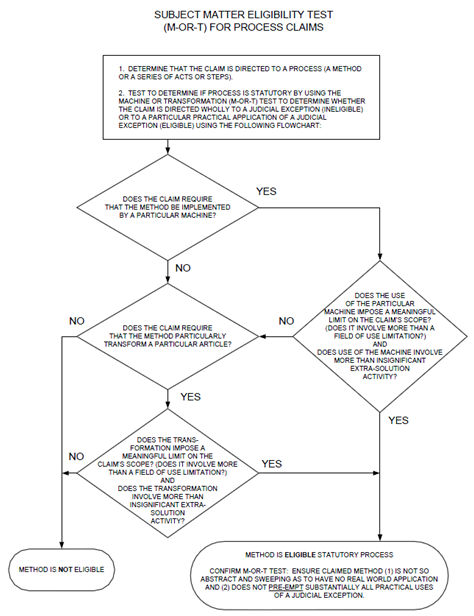|
Combining Prior Art Elements
|
|
In re Omeprazole Patent Litigation, 536 F.3d 1361 (Fed. Cir. 2008).
|
Even where a general method that could have been applied to make the claimed product was known and within the level of skill of the ordinary artisan, the claim may nevertheless be nonobvious if the problem which had suggested use of the method had been previously unknown.
|
|
Crocs, Inc. v. U.S. Int'l Trade Comm'n., 598 F.3d 1294 (Fed. Cir. 2010).
|
A claimed combination of prior art elements may be nonobvious where the prior art teaches away from the claimed combination and the combination yields more than predictable results.
|
|
Sundance, Inc. v. DeMonte Fabricating Ltd., 550 F.3d 1356 (Fed. Cir. 2008).
|
A claimed invention is likely to be obvious if it is a combination of known prior art elements that would reasonably have been expected to maintain their respective properties or functions after they have been combined.
|
|
Ecolab, Inc. v. FMC Corp., 569 F.3d 1335 (Fed. Cir. 2009).
|
A combination of known elements would have been prima facie obvious if an ordinarily skilled artisan would have recognized an apparent reason to combine those elements and would have known how to do so.
|
|
Wyers v. Master Lock Co., No. 2009–1412, —F.3d—, 2010 WL 2901839 (Fed. Cir. July 22, 2010).
|
The scope of analogous art is to be construed broadly and includes references that are reasonably pertinent to the problem that the inventor was trying to solve. Common sense may be used to support a legal conclusion of obviousness so long as it is explained with sufficient reasoning.
|
|
DePuy Spine, Inc. v. Medtronic Sofamor Danek, Inc., 567 F.3d 1314 (Fed. Cir. 2009).
|
Predictability as discussed in KSR encompasses the expectation that prior art elements are capable of being combined, as well as the expectation that the combination would have worked for its intended purpose. An inference that a claimed combination would not have been obvious is especially strong where the prior art's teachings undermine the very reason being proffered as to why a person of ordinary skill would have combined the known elements.
|
| |
|
|
Substituting One Known Element for Another
|
|
In re ICON Health & Fitness, Inc., 496 F.3d 1374 (Fed. Cir. 2007).
|
When determining whether a reference in a different field of endeavor may be used to support a case of obviousness (i.e., is analogous), it is necessary to consider the problem to be solved.
|
|
Agrizap, Inc. v. Woodstream Corp., 520 F.3d 1337 (Fed. Cir. 2008).
|
Analogous art is not limited to references in the field of endeavor of the invention, but also includes references that would have been recognized by those of ordinary skill in the art as useful for applicant's purpose.
|
|
Muniauction, Inc. v. Thomson Corp., 532 F.3d 1318 (Fed. Cir. 2008).
|
Because Internet and Web browser technologies had become commonplace for communicating and displaying information, it would have been obvious to adapt existing processes to incorporate them for those functions.
|
|
Aventis Pharma Deutschland v. Lupin, Ltd., 499 F.3d 1293 (Fed. Cir. 2007).
|
A chemical compound would have been obvious over a mixture containing that compound as well as other compounds where it was known or the skilled artisan had reason to believe that some desirable property of the mixture was derived in whole or in part from the claimed compound, and separating the claimed compound from the mixture was routine in the art.
|
|
Eisai Co. Ltd. v. Dr. Reddy's Labs., Ltd., 533 F.3d 1353 (Fed. Cir. 2008).
|
A claimed compound would not have been obvious where there was no reason to modify the closest prior art lead compound to obtain the claimed compound and the prior art taught that modifying the lead compound would destroy its advantageous property. Any known compound may serve as a lead compound when there is some reason for starting with that lead compound and modifying it to obtain the claimed compound.
|
|
Procter & Gamble Co. v. Teva Pharmaceuticals USA, Inc., 566 F.3d 989 (Fed. Cir. 2009).
|
It is not necessary to select a single compound as a ''lead compound'' in order to support an obviousness rejection. However, where there was reason to select and modify the lead compound to obtain the claimed compound, but no reasonable expectation of success, the claimed compound would not have been obvious.
|
|
Altana Pharma AG v. Teva Pharms. USA, Inc., 566 F.3d 999 (Fed. Cir. 2009).
|
Obviousness of a chemical compound in view of its structural similarity to a prior art compound may be shown by identifying some line of reasoning that would have led one of ordinary skill in the art to select and modify a prior art lead compound in a particular way to produce the claimed compound. It is not necessary for the reasoning to be explicitly found in the prior art of record, nor is it necessary for the prior art to point to only a single lead compound.
|
| |
|
|
The Obvious To Try Rationale
|
|
In re Kubin, 561 F.3d 1351 (Fed. Cir. 2009).
|
A claimed polynucleotide would have been obvious over the known protein that it encodes where the skilled artisan would have had a reasonable expectation of success in deriving the claimed polynucleotide using standard biochemical techniques, and the skilled artisan would have had a reason to try to isolate the claimed polynucleotide. KSR applies to all technologies, rather than just the ''predictable'' arts.
|
|
Takeda Chem. Indus. v. Alphapharm Pty., Ltd., 492 F.3d 1350 (Fed. Cir. 2007).
|
A claimed compound would not have been obvious where it was not obvious to try to obtain it from a broad range of compounds, any one of which could have been selected as the lead compound for further investigation, and the prior art taught away from using a particular lead compound, and there was no predictability or reasonable expectation of success in making the particular modifications necessary to transform the lead compound into the claimed compound.
|
|
Ortho-McNeil Pharmaceutical, Inc. v. Mylan Labs, Inc., 520 F.3d 1358 (Fed. Cir. 2008).
|
Where the claimed anti-convulsant drug had been discovered somewhat serendipitously in the course of research aimed at finding a new anti-diabetic drug, it would not have been obvious to try to obtain a claimed compound where the prior art did not present a finite and easily traversed number of potential starting compounds, and there was no apparent reason for selecting a particular starting compound from among a number of unpredictable alternatives.
|
|
Bayer Schering Pharma A.G. v. Barr Labs., Inc., 575 F.3d 1341 (Fed. Cir. 2009).
|
A claimed compound would have been obvious where it was obvious to try to obtain it from a finite and easily traversed number of options that was narrowed down from a larger set of possibilities by the prior art, and the outcome of obtaining the claimed compound was reasonably predictable.
|
|
Sanofi-Synthelabo v. Apotex, Inc., 550 F.3d 1075 (Fed. Cir. 2008).
|
A claimed isolated stereoisomer would not have been obvious where the claimed stereoisomer exhibits unexpectedly strong therapeutic advantages over the prior art racemic mixture without the correspondingly expected toxicity, and the resulting properties of the enantiomers separated from the racemic mixture were unpredictable.
|
|
Rolls-Royce, PLC v. United Technologies Corp., 603 F.3d 1325 (Fed. Cir. 2010).
|
An obvious to try rationale may be proper when the possible options for solving a problem were known and finite. However, if the possible options were not either known or finite, then an obvious to try rationale cannot be used to support a conclusion of obviousness.
|
|
Perfect Web Techs., Inc. v. InfoUSA, Inc., 587 F.3d 1324 (Fed. Cir. 2009).
|
Where there were a finite number of identified, predictable solutions and there is no evidence of unexpected results, an obvious to try inquiry may properly lead to a legal conclusion of obviousness. Common sense may be used to support a legal conclusion of obviousness so long as it is explained with sufficient reasoning.
|
| |
|
|
Consideration of Evidence
|
|
PharmaStem Therapeutics, Inc. v. ViaCell, Inc., 491 F.3d 1342 (Fed. Cir. 2007).
|
Even though all evidence must be considered in an obviousness analysis, evidence of nonobviousness may be outweighed by contradictory evidence in the record or by what is in the specification. Although a reasonable expectation of success is needed to support a case of obviousness, absolute predictability is not required.
|
|
In re Sullivan, 498 F.3d 1345 (Fed. Cir. 2007).
|
All evidence, including evidence rebutting a prima facie case of obviousness, must be considered when properly presented.
|
|
Hearing Components, Inc. v. Shure Inc., 600 F.3d 1357 (Fed. Cir. 2010).
|
Evidence that has been properly presented in a timely manner must be considered on the record. Evidence of commercial success is pertinent where a nexus between the success of the product and the claimed invention has been demonstrated.
|
|
Asyst Techs., Inc. v. Emtrak, Inc., 544 F.3d 1310 (Fed. Cir. 2008).
|
Evidence of secondary considerations of obviousness such as commercial success and long-felt need may be insufficient to overcome a prima facie case of obviousness if the prima facie case is strong. An argument for nonobviousness based on commercial success or long-felt need is undermined when there is a failure to link the commercial success or long-felt need to a claimed feature that distinguishes over the prior art.
|
 Guest Post by Anthony Trippe, Chair of PIUG – The International Organization for Patent Information Professionals. I asked Mr. Trippe to provide his perspective as a professional search specialist on the USPTO/EPO joint classification announcement.
Guest Post by Anthony Trippe, Chair of PIUG – The International Organization for Patent Information Professionals. I asked Mr. Trippe to provide his perspective as a professional search specialist on the USPTO/EPO joint classification announcement. 
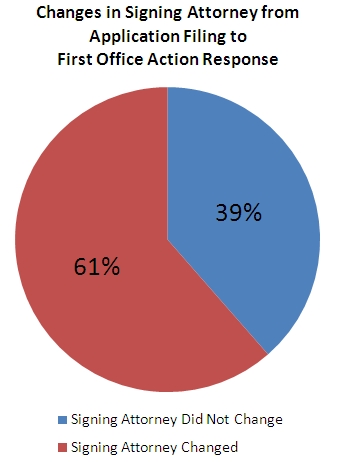
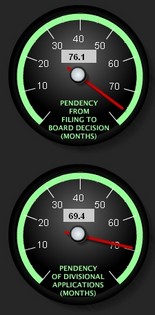 The USPTO has publicly released its
The USPTO has publicly released its 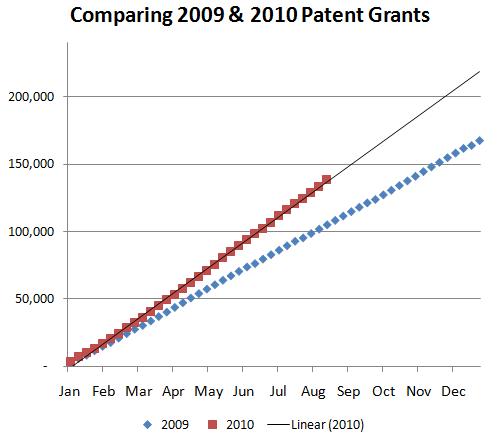
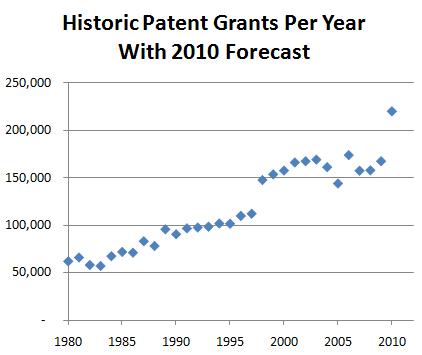
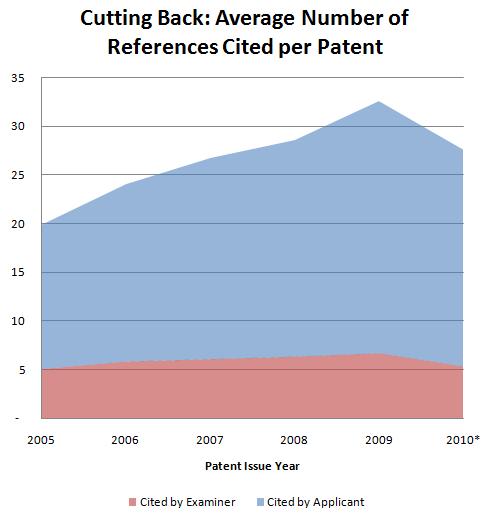 The chart above shows the average number of prior art references cited per patent, grouped by issue year. The chart is "stacked" with references cited by the examiner at the bottom and references cited by the applicant on-top.
The chart above shows the average number of prior art references cited per patent, grouped by issue year. The chart is "stacked" with references cited by the examiner at the bottom and references cited by the applicant on-top.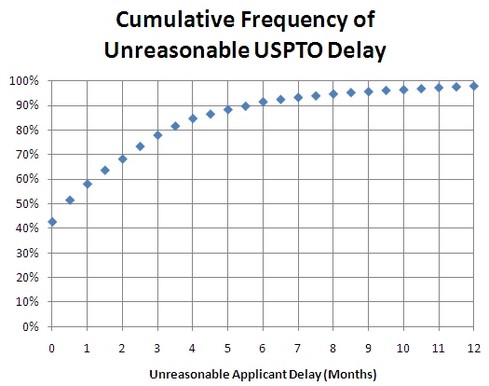

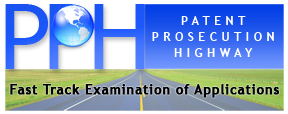 The USPTO is quickly moving forward with its Patent Prosecution Highway (PPH) and applicants may want to consider whether it is time to jump aboard.
The USPTO is quickly moving forward with its Patent Prosecution Highway (PPH) and applicants may want to consider whether it is time to jump aboard.


